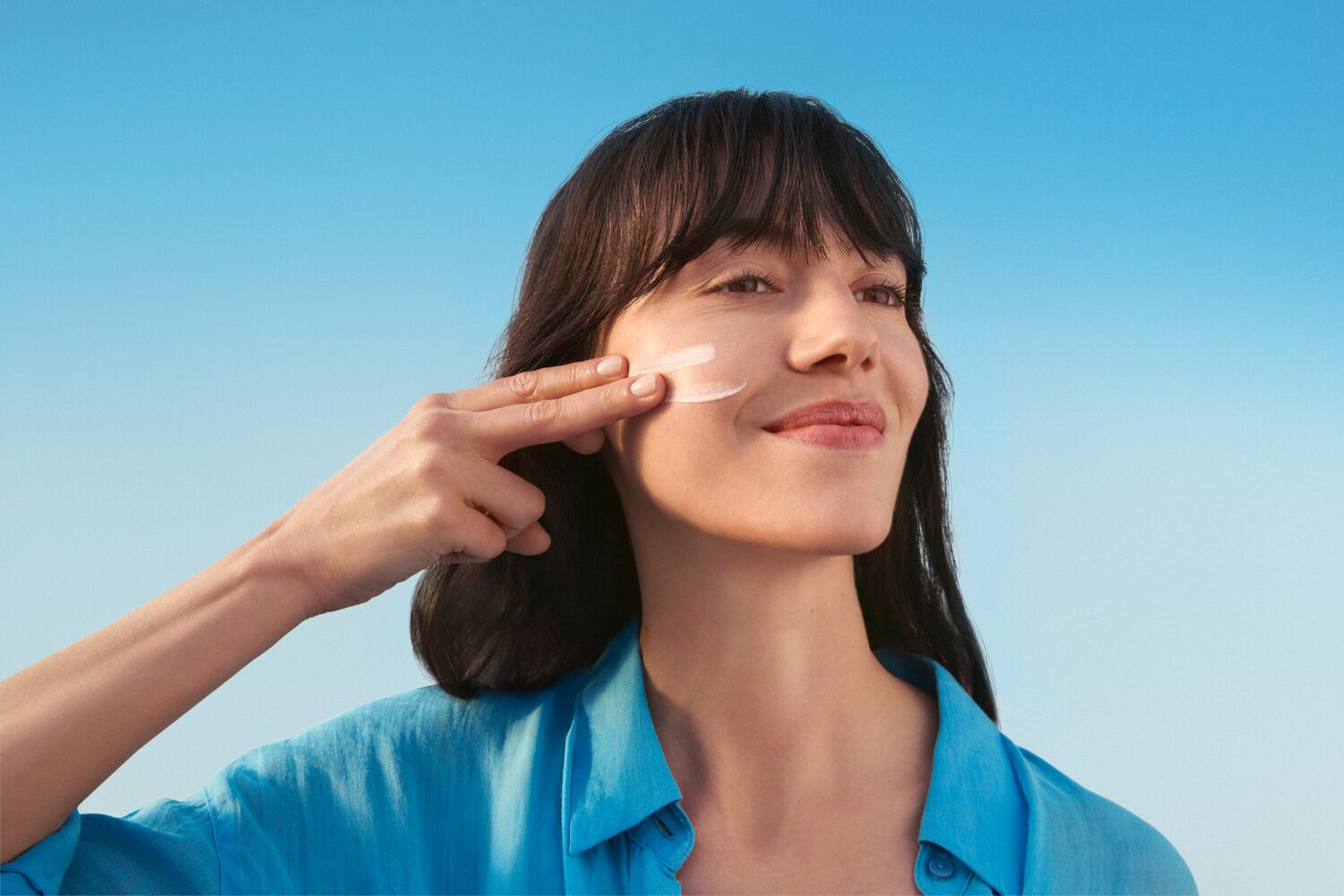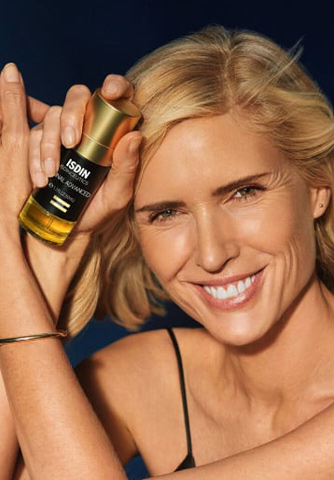Have you ever wondered if there’s something to the term beauty sleep? While achieving eight hours of shut-eye may seem like a dream, science shows that restful sleep is key to a healthy, beautiful complexion. And it’s just one factor in how your lifestyle and environment affect your skin.
Let’s take a look at the process your skin goes through while you’re asleep, and what you can do to aid it along the way.
Table of Contents
What is the skin exposome?
Think about the hundreds of little choices you make each day: what you eat, how much you sleep, or how often you’re outdoors. All of these things add up to affect your skin.
This concept, known as the exposome, includes everything from your daily habits to external stressors such as pollution and sun exposure. Together, these factors play a powerful role in how your skin ages and responds to the world.

One exposome factor that’s in your direct control? Sleep. Getting enough quality rest can help keep skin at its best — while the opposite can lead to a dull, tired-looking appearance. This makes a holistic skincare approach (one that considers both your lifestyle and environment) the path to healthy skin in the long run.
How does sleep affect your skin?
If you need one more reason to hit the hay early — as it turns out, sleep is a core step in any skincare routine. That’s because as you unwind after a busy day, your skin also slips into regeneration mode. At night, the skin conducts a natural repairing activity to reverse damage suffered during the day. And when you skimp on sleep, this process is disrupted.
The result? A weakened skin barrier, increased sensitivity, and a dull, tired complexion. Science has shown that lack of sleep can even accelerate the signs of aging and diminish skin barrier function. In fact, one study showed that participants who slept less than five hours a night noted increased signs of aging and lower satisfaction with how their skin looked.
But it’s not all about appearance. Getting enough rest also supports what’s most important: skin health.

What happens to your skin at night?
Your skin goes through plenty of changes during the day, and the same rings true after the sun goes down. Here are a few things to keep in mind:
Circadian rhythm plays a role
You may be aware of your body’s circadian rhythm — the internal system that regulates your sleep-wake cycle. At night, this system signals to the organs that it’s time to power down, sending your body into a state of rest and repair.
But did you know your skin houses the same biorhythm? That’s because your skin is actually a large, complex organ — complete with its own layers and mini-organ structures. So, really, your skin has many different “clocks” working together to heal and nourish itself.
It’s especially receptive to products
Your skin naturally becomes more permeable at night, making it especially responsive to the benefits of skincare. It’s the perfect opportunity to apply revitalizing ingredients like retinal, antioxidants, or peptides, to name a few.

Repair mode turns on
While you sleep, your skin’s natural repair mechanisms are at their most active. This is when it works to reverse any harm suffered during the day from UV exposure, pollution, and other factors. Research also shows that nighttime is when skin cells work their hardest to repair DNA damage.
The takeaway? Consistent sleep enables your skin to rebuild its resilience, keeping it healthy and happy. Meanwhile, skimping on this restorative time may leave it more vulnerable to daily stressors.
It loses more moisture
At night, your skin experiences increased transepidermal water loss (TEWL), since its natural barrier becomes more permeable. This makes it easier for water to escape, leaving your skin prone to dehydration. Reduced oil production at night also plays a part in this moisture loss.

How to get that well-rested look
Your evening skincare ritual gives your skin (and mind) a moment to relax and switch gears. While the ideal routine depends on your individual needs, here’s a bit of initial inspiration:
1. Reach for melatonin
In addition to helping you sleep, melatonin plays many other roles in the body — one of which is in your skin’s best interest. Acting as an indirect antioxidant, melatonin triggers enzymes that help repair the effects of oxidative stress from UV rays, pollution, or other exposome factors.
Why is this so important? The free radicals from oxidative stress can lead to signs of skin damage and early aging. Turn to topical products including melatonin, such as a nighttime eye cream or melatonin-rich serum, to give your skin an extra boost.

2. Stay hydrated
Remember, your skin loses even more water at night. To combat overnight dehydration, reach for nourishing creams containing humectants such as hyaluronic acid, glycerin, or panthenol. These ingredients help retain moisture and keep your skin plump and smooth.

3. Get your hours in
Last but not least, it’s time to give your skin the time it needs for sleep’s natural benefits — namely rejuvenation and repair — to work their magic. For adults, seven to nine hours of sleep is ideal. So, power down your devices, push your alarm clock back half an hour, and settle in for the night, all in the name of healthy, beautiful skin.

Sources and references:
Pilkus et al. The circadian clock in skin: implications for adult stem cells, tissue regeneration, cancer, aging, and immunity.
Matsui M.S. et al. Biological Rhythms in the Skin. Int J Mol Sci 2016
J Biol Rhythms. 2015 Jun;30(3):163-82.
Iryna Rusanova et al. Review Protective Effects of Melatonin on the Skin: Future Perspectives J. Mol. Sci. 2019, 20(19), 4948
Blue light has a dark side. Retrieved from https://www.health.harvard.edu/staying-healthy/blue-light-has-a-dark-side.
Behind the blog:
Article written and reviewed by:
Amy is a content strategist who turned a part-time obsession with skincare into a full-time passion. Her experience as a creative storyteller includes a range of lifestyle and technology topics across Washington D.C. and Barcelona. What's in her travel bag? Eye contour cream and sunscreen, always.











